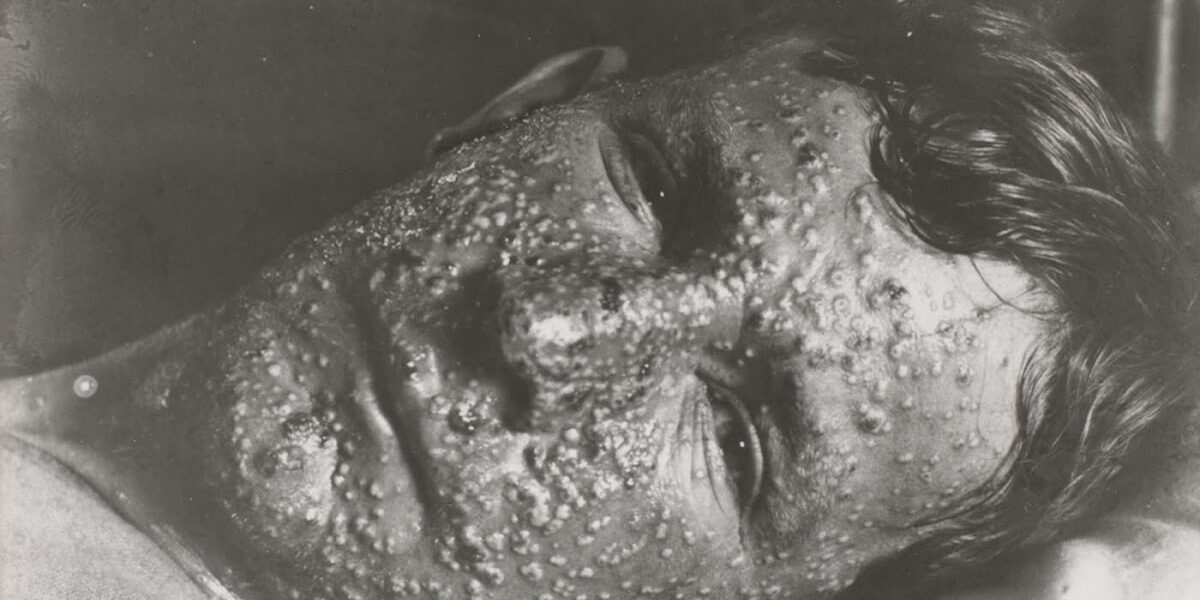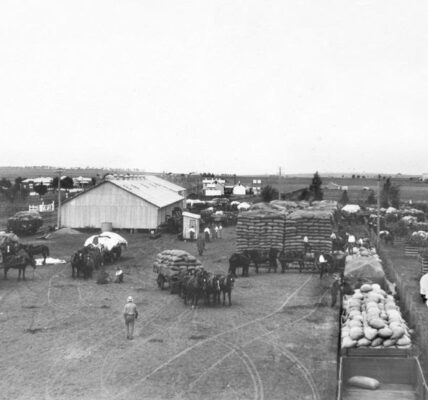Europeans, including the colonists who arrived in Sydney in 1788, had developed some resistance through earlier exposure to the disease. However the local Aboriginal people had not.
There is still debate over how smallpox broke out in the Sydney area in 1789. Its impact on Aboriginal people across Australia was devastating.
 |
| The effects of smallpox are shown in this photograph taken at North Head Quarantine Station, Sydney. (National Museum of Australia) |
David Collins, Judge-Advocate of the colony, April 1789:
At that time a native was living with us; and on taking him down to the harbour to look for his former companions, those who witnessed his expression and agony can never forget either. He looked anxiously around him in the different coves we visited; not a vestige on the sand was to be found of human foot; … not a living person was anywhere to be met with. It seemed as if, flying from the contagion, they had left the dead to bury the dead. He lifted up his hands and eyes in silent agony for some time; at last he exclaimed, ‘All dead! all dead!’ and then hung his head in mournful silence.
In April 1789, 15 months after the First Fleet arrived to establish a penal colony in NSW, a major smallpox epidemic broke out.
The outbreak did not affect the British colonists, most of whom had been exposed to the disease during their infancy. As a result, smallpox was not detected until members of the Aboriginal communities living between Sydney Cove and the Heads were found, according to Newton Fowell, ‘laying Dead on the Beaches and in the Caverns of Rocks’. They were, ‘generally found with the remains of a Small Fire on each Side of them and some Water left within their Reach’.
Without previous exposure to the smallpox virus, Aboriginal people had no resistance, and up to 70 per cent were killed by the disease.
The question of how smallpox appeared among the local Indigenous groups was settled to the satisfaction of the early settlers by blaming the French. Explorer Comte de La Perouse had anchored his ships in Botany Bay for six weeks after the British first arrived. At least one of their company died during this period and was buried on the shore of the bay.
However, had the French infected the local population, the outbreak would have started in the early months of 1788, not more than a year later.
Subsequent commentators have suggested that unsuspecting Makasar fishermen brought smallpox to Australia’s north, after which it travelled down well-established trade routes. However, given the relatively high population densities required for the disease to spread, and the fact that those infected quickly become incapable of walking, any such outbreak is unlikely to have spread across the desert trade routes.
A more likely source of the disease was the ‘variolas matter’ Surgeon John White brought with him on the First Fleet. ‘Variolas matter’ is pus taken from a recovering smallpox sufferer and sealed in a glass bottle to isolate and preserve it. White intended to use it to variolate any children born in the settlement. Research in the 1970s has shown that the smallpox virus withstands a wide range of temperatures and humidity and remains viable over many years.
How this material could have infected the local tribes is unknown. The appalling devastation it wrought probably silenced anyone in the colony who might have known.
Effect on Aboriginal people
Smallpox spread across the country with the advance of European settlement, bringing with it shocking death rates. The disease affected entire generations of the Indigenous population and survivors were in many cases left without family or community leaders.
The spread of smallpox was followed by influenza, measles, tuberculosis and sexually transmitted diseases, all of which Australia’s Aboriginal people had no resistance to, and all of which brought widespread death.




